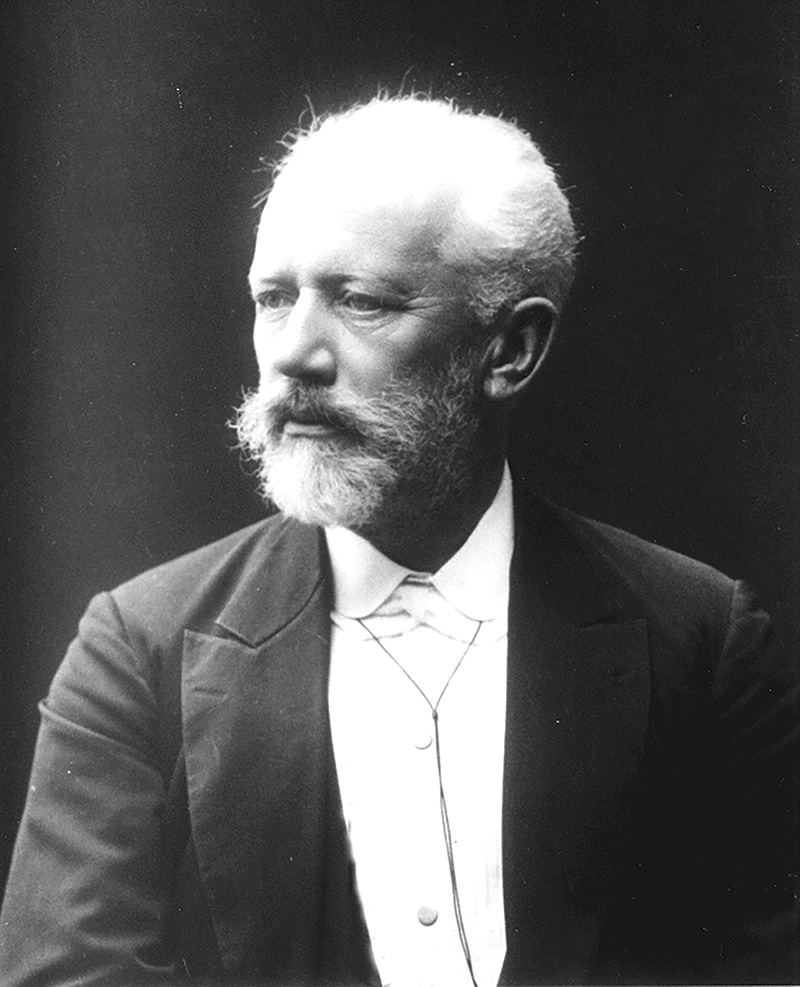Piotr Ilyich Tchaikovsky

- Born: May 7, 1840, Kamsko-Votkinsk, Russia
- Died: November 6, 1893, Saint Petersburg, Russia
Concerto in D Major for Violin and Orchestra, Op. 35
- Composed: March 17–April 11, 1878, at Clarens on Lake Geneva, Switzerland
- Premiere: December 4, 1881, Vienna, Hans Richter conducting; Adolf Brodsky, violin
- Instrumentation: solo violin, 2 flutes, 2 oboes, 2 clarinets, 2 bassoons, 4 horns, 2 trumpets, timpani, strings
- CSO notable performances: First Performance: January 1899, Frank Van der Stucken conducting with Willy Burmester, violin. Most Recent: November 2019, Louis Langrée conducting with Gil Shaham, violin. Other: November 1913, Ernst Kunwald conducting and Fritz Kreisler, violin; January 1919, Eugène Ysaÿe conducting and Mischa Elman, violin.
- Duration: approx. 36 minutes
There is certainly no shortage of great masterpieces that met with negative criticism at their premiere, but few have fared worse than Tchaikovsky’s Violin Concerto. This may sound surprising, since this work, now one of the most popular of all concertos, has none of the revolutionary spirit of Stravinsky’s Rite of Spring, Wagner’s Ring cycle or Beethoven’s Eroica, to name just three works that generated heated controversies around the time of their premieres. Yet there were some distinct ways in which the Tchaikovsky concerto clashed with the expectations of people who had very strong opinions about what a violin concerto ought to be like. The great violinist and teacher, Leopold Auer, for whom the concerto was written, rejected it. And the Viennese critic Eduard Hanslick, a friend of Brahms and a fierce opponent of Wagner, uttered the immortal phrase after the 1881 premiere that the concerto “stank to the ear.” The harshness and vulgarity of these opinions could not help but exacerbate Tchaikovsky’s depressive tendencies that were never far from the surface. The composer never forgot Hanslick’s diatribe to the end of his days.
Why this unusually strong resistance to a work that did not attempt to challenge the existing world order but wanted “simply” to be what it was: a brilliant and beautiful violin concerto? In Hanslick’s case, the answer may lie in the critic’s inability to accept symphonic music that was not Germanic in spirit. The first great violin concerto to come from Russia, Tchaikovsky’s work certainly struck a chord that was disconcertingly foreign in Vienna. (It is ironic that Hanslick thought of Tchaikovsky as a Russian barbarian, while in Russia, the composer was considered a “Westernizer” who was not as truly and completely Russian as Balakirev and his circle, known as the “Mighty Five.”) As for Auer, the novel technical demands of the piece may have seemed to him insurmountable at first; yet, to his credit, he soon took a second look and changed his mind. He became a great advocate of the concerto, and taught it to many of his star students, whose list included Mischa Elman, Jascha Heifetz and Efrem Zimbalist.
The concerto was written in the spring of 1878. In order to recover from the recent trauma of his ill-fated and short-lived marriage to Antonina Milyukova, Tchaikovsky retreated to the Swiss village of Clarens, on the shores of Lake Geneva, accompanied by his brother Modest, and a 22-year-old violinist named Iosif Kotek, who assisted him in matters of violin technique. The composition progressed so effortlessly that the whole concerto was written in only three weeks, with an extra week taken up by the orchestration. During this time, Tchaikovsky wrote not only the three concerto movements that we know, but a fourth one as well: the initial second movement, “Méditation,” was rejected at an early runthrough and replaced with the present “Canzonetta,” written in a single day. Due to Auer’s initial unfavorable reaction, no violinist accepted the work for performance for three years, until the young Adolf Brodsky, a Russian-born virtuoso living in Vienna, chose it for his debut with the Vienna Philharmonic, so uncharitably described by Hanslick.
One of the things that makes this concerto so great is surely the ease with which Tchaikovsky moves from one mood to the next: lyrical and dramatic, robustly folk-like and tenderly sentimental moments follow one another without the slightest incongruity, similarly to Tchaikovsky’s famous Piano Concerto No. 1, written three years earlier. Another remarkable feature is the combination of virtuosity with emotional depth: although the technical difficulties of the solo part are tremendous, every note also expresses something that goes far beyond virtuosic fireworks. All in all, it is one of the greatest violin concertos ever written, and no critic after Hanslick has ever challenged its status again or smelled anything unpleasant in the work!
—Peter Laki